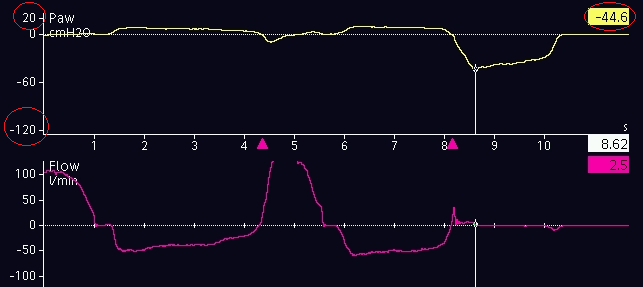
作者: Bernhard Schmitt, Simon Franz
日期: 02.10.2020
Last change: 02.10.2020
SW versions updatedHamilton Medical 哈美顿医疗公司呼吸机的用户可能希望使用最大吸气压 (MIP) 来指示吸气肌的能力,特别是隔膜的强度。吸气负压 (NIF) 是一个同义词。

MIP 的定义
MIP 定义为对阻塞气道产生的压力形式的最大吸气努力。MIP 值可以通过长时间气道开放闭塞操作来确定,即使无病人配合,也可以获得最大吸气努力。MIP 尝试的持续时间从 1 到 25 s 不等,应至少重复两次以确保可靠的值 (
在 HAMILTON‑G5/S1 呼吸机上进行 MIP 尝试
如何使用 HAMILTON‑G5/S1 进行 MIP 尝试:
- 病人必须为主动型,即自主呼吸
- 手动设置压力曲线的 Y‑轴:正 20,负 ‑120
- 将 PEEP 设置为 0
- 执行呼气屏气
- 测量压力曲线的最小值(见图 1)
在此示例中,测量的 MIP 为 44.6,因为 MIP 总是一个正值。
目前只能在 HAMILTON‑G5/S1 上测量这些值。
相关软件:2.8x 及更高版本




